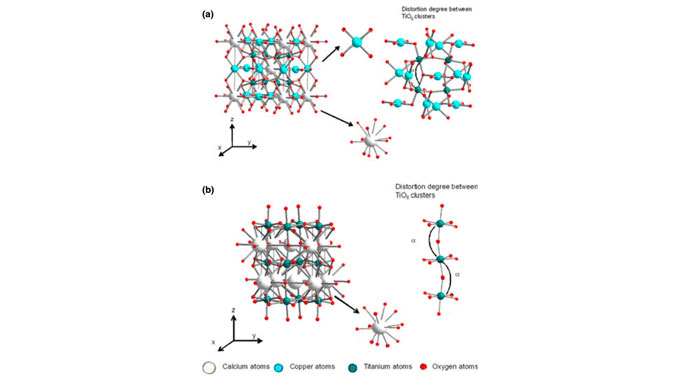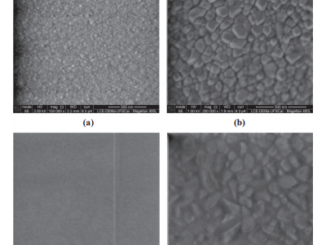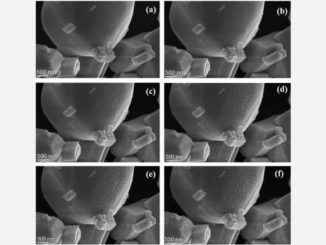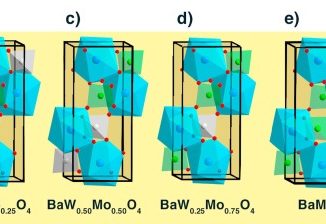
Writers: Larissa H. Oliveira, Elaine C. Paris, Waldir Avansi, Miguel A. Ramirez, Valmor R. Mastelaro, Elson Longo, José A. Varela
Keywords: Photoluminescence; X-ray
Abstract: Ca1+xCu3−xTi4O12powders were synthesized by a conventionalsolid-state reaction. X-ray diffraction (XRD) was performedto verify the formation of cubic CaCu3Ti4O12(CCTO) and ortho-rhombic CaTiO3(CTO) phases at long range. Rietveld refine-ments indicate that excess Ca atoms added to the Ca1−xCu3−xTi4O12(x = 1.0) composition segregated in a CaTiO3secondary phase suggesting that solubility limit of Ca atoms inthe CaCu3Ti4O12lattice was reached for this system. The FE-SEM images show that the Ca1+xCu3−xTi4O12(0 < x < 3)powders are composed of several agglomerated particles withirregular morphology. X-ray absorption near-edge structurespectroscopy (XANES) spectra indicated [TiO5Voz]-[TiO6]complex clusters in the CaCu3Ti4O12structure which can beassociated with oxygen vacancies (Voz= Vox,Vo•, and Vo••)whereas in the CaTiO3powder, this analysis indicated [TiO6]–[TiO6] complex clusters in the structure. Ultraviolet-visible(UV–vis) spectra and photoluminescence (PL) measurementsfor the analyzed systems revealed structural defects such asoxygen vacancies, distortions, and/or strains in CaCu3Ti4O12and CaTiO3lattices, respectively.
See PDF: Correlation Between Photoluminescence and Structural Defects in Ca1+xCu3-xTi4O12 Systems
DOI: 10.1111/jace.12020




